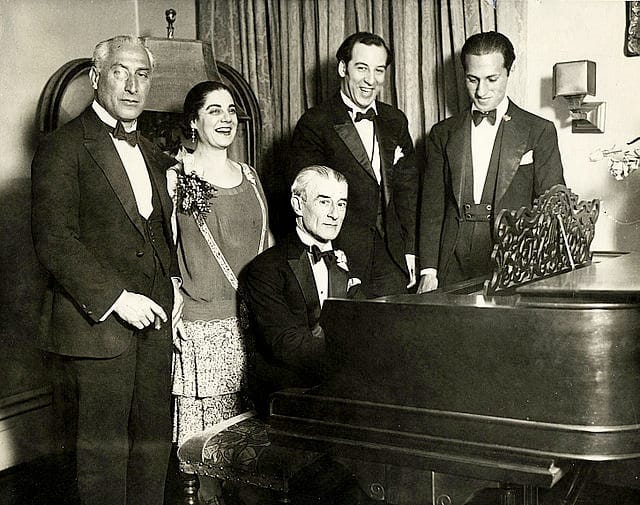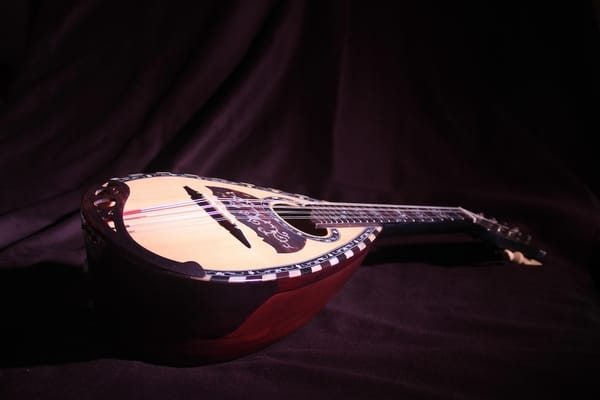Rhapsody in Blue: The Soundtrack of a Jazz Revolution
From Olympic grandeur to cinematic brilliance, Gershwin's 'Rhapsody in Blue' continues to captivate audiences, embodying the essence of the Jazz Age and America's cultural metamorphosis. Discover the story behind this timeless musical masterpiece.

How many of you remember the 1984 Los Angeles Olympics? Television came into Goa in 1982, but took some time to gain traction. I used to go to the Don Bosco oratory (then a small affair in the middle of the grounds) to watch the 1982 Asian Games on a small black-and-white television set. But two years on, we had just got our own set for the first time, a Crown colour television. Reception was literally quite shaky, as the slightest breeze could affect the rooftop antenna.
I remember making coffee for a whole bunch of friends and neighbours who came in early in the morning to watch the Los Angeles opening ceremony. Its memorable highlight was 84 pianists pounding out George Gershwin’s iconic 1924 jazz concerto, ‘Rhapsody in Blue’, al fresco, on 84 concert grand pianos! Trust the Americans to rub it in with their “if it’s worth doing, it’s worth overdoing” mantra. So, in addition, you had 200 dancers in the act as well, pirouetting and swaying to the music.
For 84 pianists to not only get their fingers around Gershwin’s virtuosic writing, but also to allow the jazz swing and swagger of the music to come across at the same time, broadcast live to billions of people worldwide was an achievement deserving of an Olympic medal in and of itself. I’m guessing that we probably heard the one pianist actually on the same level as the orchestra, rather than the 84 in baby-blue coat-and-tails much higher up, far from the orchestra and conductor John Williams.
It is not only 40 years since that spectacular (in every sense of the word) performance, but also the centenary of Gershwin’s ‘Rhapsody in Blue,’ being celebrated on radio stations and in concert halls everywhere. Its significance cannot be overstated, as a key composition that defined the Jazz Age, ushering a new era in American music history.
We (Child’s Play India foundation) have a beautifully illustrated hardcover children’s book ‘The Music in George’s Head’ in our library that reveals just how brilliantly Gershwin combined various kinds of music to create this masterpiece, “a surprising and whirlwind composition of notes, sounds, and one long wail of a clarinet,” (referring of course to that famous opening clarinet glissando).
While in the middle of a billiards game in January 1924, Gershwin was interrupted by his brother who read him an article in the New York Tribune that falsely stated that he had begun "work on a jazz concerto" although he had actually declined the commission. But when Gershwin learned that arch-rival Vincent Lopez planned to “steal the idea”, he decided to take it on, with just weeks before the scheduled concert.
The thematic seeds for ‘Rhapsody in Blue’ sprouted in Gershwin’s head while on a train to Boston, as he told his biographer Isaac Goldberg: “It was on the train, with its steely rhythms, its rattle-ty bang, that is so often so stimulating to a composer ... I frequently hear music in the very heart of the noise. And there I suddenly heard – and even saw on paper – the complete construction of the rhapsody, from beginning to end. No new themes came to me, but I worked on the thematic material already in my mind and tried to conceive the composition as a whole. I heard it as a sort of musical kaleidoscope of America, of our vast melting pot, of our unduplicated national pep, of our metropolitan madness. By the time I reached Boston I had a definite plot of the piece, as distinguished from its actual substance.”
Quite a contrast from composers from Beethoven to Mahler to Elgar who actively sought the solitude, peace and quiet and sounds of nature of the countryside as inspiration for their music.
Another urban setting allowed Gershwin to complete the work: “The middle theme came to me suddenly, as music oftentimes does. It was at the home of a friend… I must do a great deal of subconscious composing, and this is an example. Playing at parties is one of my notorious weaknesses. Well, as I was playing, without a thought of the Rhapsody, all at once I heard myself playing a theme that must have been haunting me inside, seeking outlet. No sooner had it oozed out of my fingers that I realized I had found it. Within a week of my return to Boston I had completed the structure, in the rough, of the Rhapsody in Blue.”
The orchestration of the work was completed by composer, arranger and pianist Ferde Grofé just 8 days before the premiere on 12 February in New York City.
Gershwin abandoned his original title, ‘American Rhapsody,’ at his brother Ira’s suggestion. Ira had spent an afternoon at a gallery studying the paintings of James McNeil Whistler and was influenced by Whistler’s descriptive titles – ‘Nocturne in Black and Gold’, ‘Arrangement in Grey and Black’ (better known as ‘Whistler’s Mother’ made famous in the 1997 ‘Mr. Bean’ film) etc –so why not a ‘Rhapsody in Blue’?
It captured the essence of New York so perfectly that it was the inspiration for Woody Allen’s 1979 American romantic comedy-drama film ‘Manhattan’, with Gershwin’s music played by the New York Philharmonic conducted by Zubin Mehta, as well as the Buffalo Philharmonic under Michael Tilson Thomas.
‘Rhapsody in Blue’ was also used as leitmotif for the character of Jay Gatsby in Buzz Luhrmann’s 2013 film ‘The Great Gatsby,’ the cinematic adaptation of F. Scott Fitzgerald’s 1925 eponymous classic novel. Fitzgerald in 1927 had declared that the work “idealised the youthful zeitgeist of the Jazz Age.” Social historian Peter Quernell in turn felt that Fitzgerald’s novel embodied "the sadness and the remote jauntiness of a Gershwin tune."
Gershwin and Gatsby have much in common: a lower-class background, meteoric rise to fame, and an early death in their thirties.
Critics have faulted ‘Rhapsody in Blue’ for being a sort of step-child, neither truly a symphonic work nor genuine jazz, as the piano part is notated and not improvised. Accusations of cultural appropriation by Gershwin of the jazz idiom that “was never rightfully his” have also been made.
Musicologists point to its ‘formlessness’ describing it as “a loosely ordered sequence of tunes.” But American composer, writer and conductor David Schiff, author of a book on the work, says its ‘problem’ may be “an overabundance of forms.”
Schiff says in the Introduction to his book: “The fact that [Rhapsody in Blue] has outlived many works whose compositional credentials have never been questioned raises an important aesthetic issue: if a musical work continues to be played for three generations after its premiere just how flawed can its form be?”
A quarter-century after Schiff wrote that in 1997, and a century after the piece was written, ‘Rhapsody in Blue’ is still a staple in the concert repertoire and in listeners’ hearts.
This article first appeared in The Navhind Times, Goa, India.





